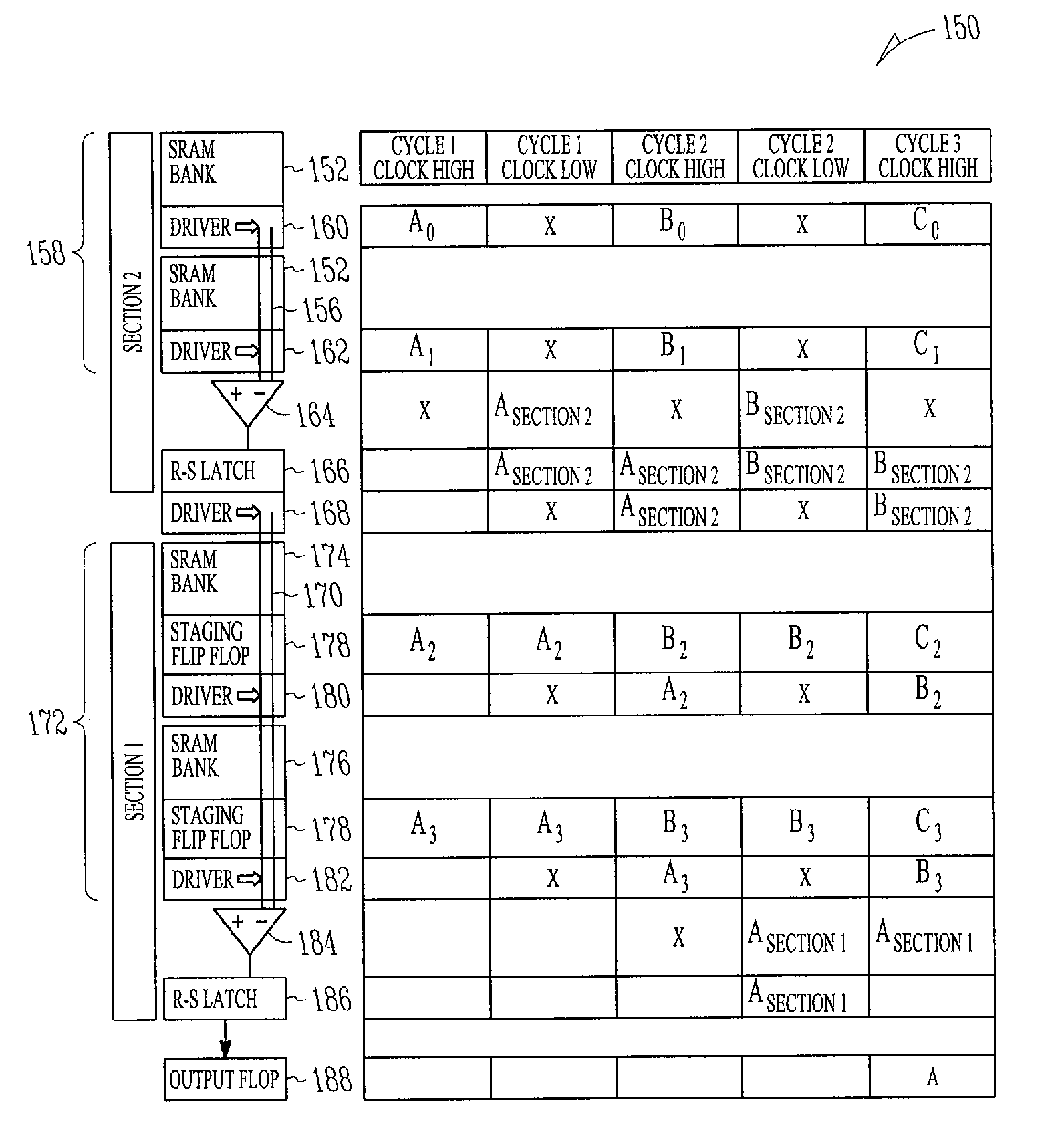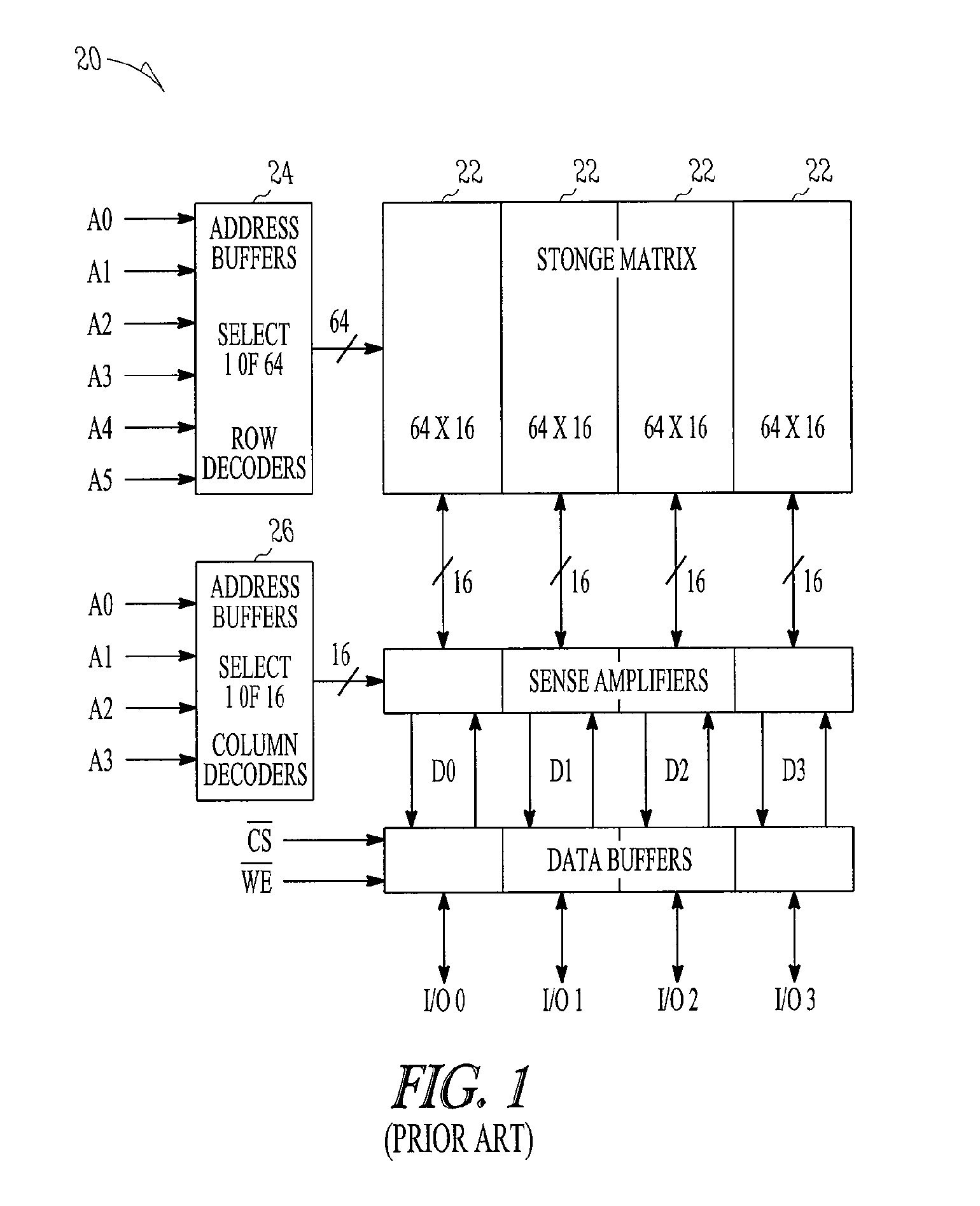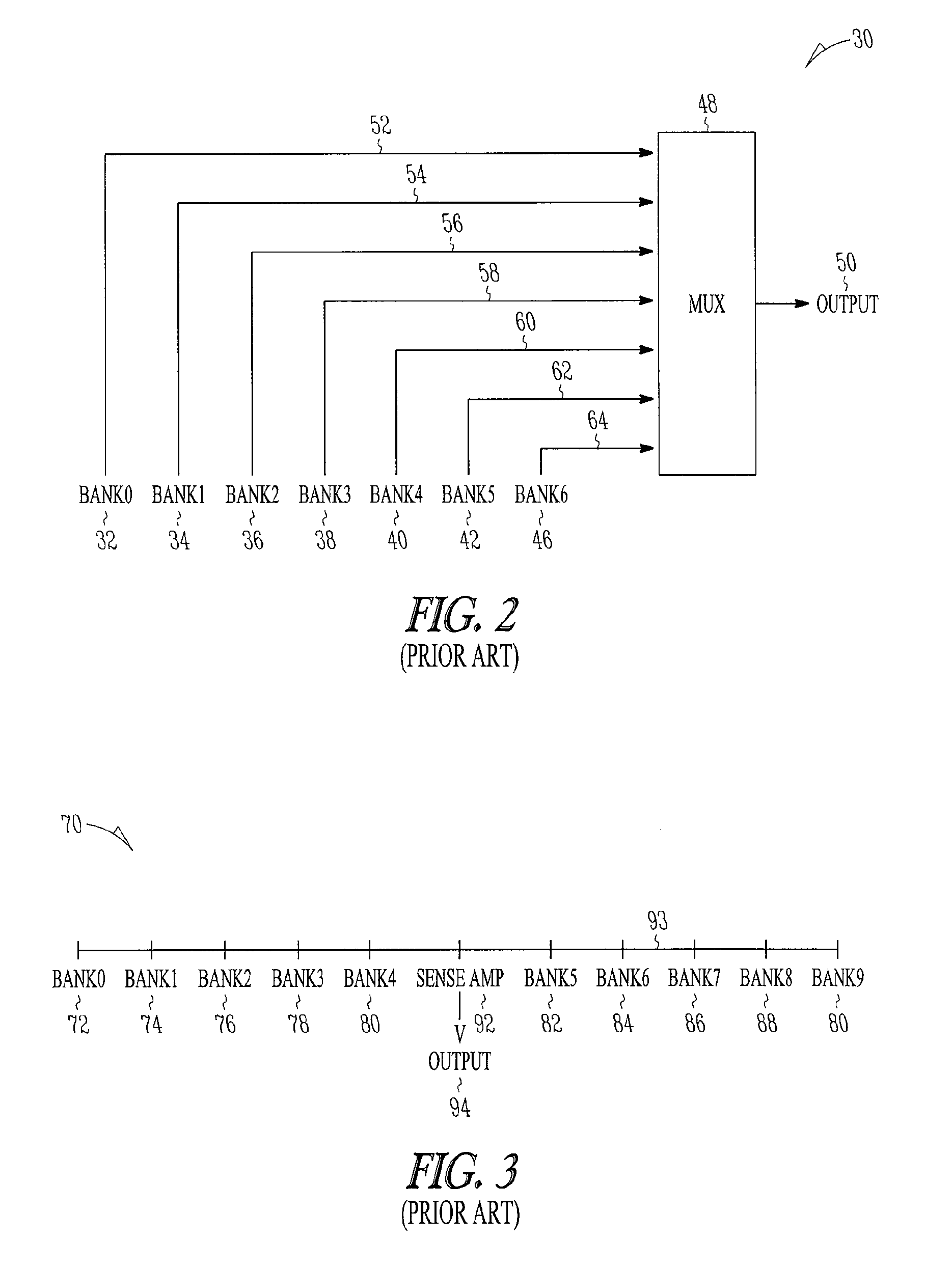Static random access memory architecture
a random access and memory technology, applied in static storage, information storage, digital storage, etc., can solve the problems of increasing the clock frequency of srams, large integrated circuit area, and increasing the clock speed of microprocessors
- Summary
- Abstract
- Description
- Claims
- Application Information
AI Technical Summary
Benefits of technology
Problems solved by technology
Method used
Image
Examples
Embodiment Construction
[0036]According to one broad aspect of the invention, disclosed herein is a memory which may be used in a router. In one example, the memory includes a first data bus, a first plurality of banks of SRAM coupled with the first data bus, a first differential sense amplifier receiving the first data bus, and a first output driver receiving the output of the first differential sense amp. The first output driver selectively drives the signal from the first data bus onto a second data bus which has a second plurality of banks of SRAM coupled thereto. A second differential sense amplifier receives the second data bus (as well as the first data bus through the first output driver), and a second output driver selectively drives an output signal which may include data from the first data bus or the second data bus. The memory may be expanded by adding additional data buses coupled with additional SRAM banks. Staging logic or logic gates may be used to temporarily store data from SRAM banks as...
PUM
 Login to View More
Login to View More Abstract
Description
Claims
Application Information
 Login to View More
Login to View More - R&D
- Intellectual Property
- Life Sciences
- Materials
- Tech Scout
- Unparalleled Data Quality
- Higher Quality Content
- 60% Fewer Hallucinations
Browse by: Latest US Patents, China's latest patents, Technical Efficacy Thesaurus, Application Domain, Technology Topic, Popular Technical Reports.
© 2025 PatSnap. All rights reserved.Legal|Privacy policy|Modern Slavery Act Transparency Statement|Sitemap|About US| Contact US: help@patsnap.com



